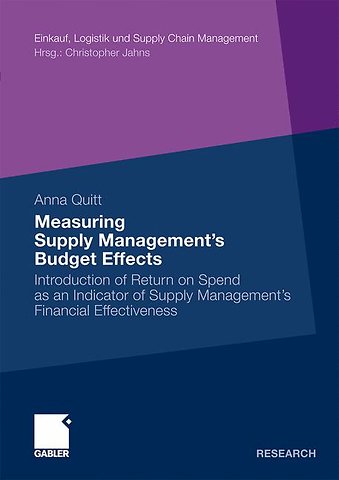Measuring Supply Management’s Budget Effects
Introduction of Return on Spend as an Indicator of Supply Management’s Financial Effectiveness
Paperback Engels 2010 2010e druk 9783834921109Samenvatting
Performance Measurement is currently one of the most talked about topics in Purchasing and Supply Management (PSM) – in research as well as in business practice. However, it is not simply a business fad; researchers already introduced the Balanced Scorecard, a performance measurement method, to PSM a few years ago. A more novel idea in this context is measuring the budget impact of PSM – its financial effectiveness. In business practice, only 10-20% of supply management’s effectiveness can be identified retrospectively in the P&L account with current measurement methods. Thus, PSM is often criticised for only being able to demonstrate its efforts on presentation charts, so-called “powerpoint savings”. Therefore, researchers were requested to support practitioners in finding a solid and feasible solution to the problem of savings measurement. The derived solution measures PSM’s financial effectiveness by integrating the function in the budgeting procedure, based on the following hypothesis: Only when supply management addresses its planned savings potential already in the budgets, it can show its comprehensive bottom line effect.
Specificaties
Lezersrecensies
Inhoudsopgave
Anderen die dit kochten, kochten ook
Rubrieken
- advisering
- algemeen management
- coaching en trainen
- communicatie en media
- economie
- financieel management
- inkoop en logistiek
- internet en social media
- it-management / ict
- juridisch
- leiderschap
- marketing
- mens en maatschappij
- non-profit
- ondernemen
- organisatiekunde
- personal finance
- personeelsmanagement
- persoonlijke effectiviteit
- projectmanagement
- psychologie
- reclame en verkoop
- strategisch management
- verandermanagement
- werk en loopbaan






